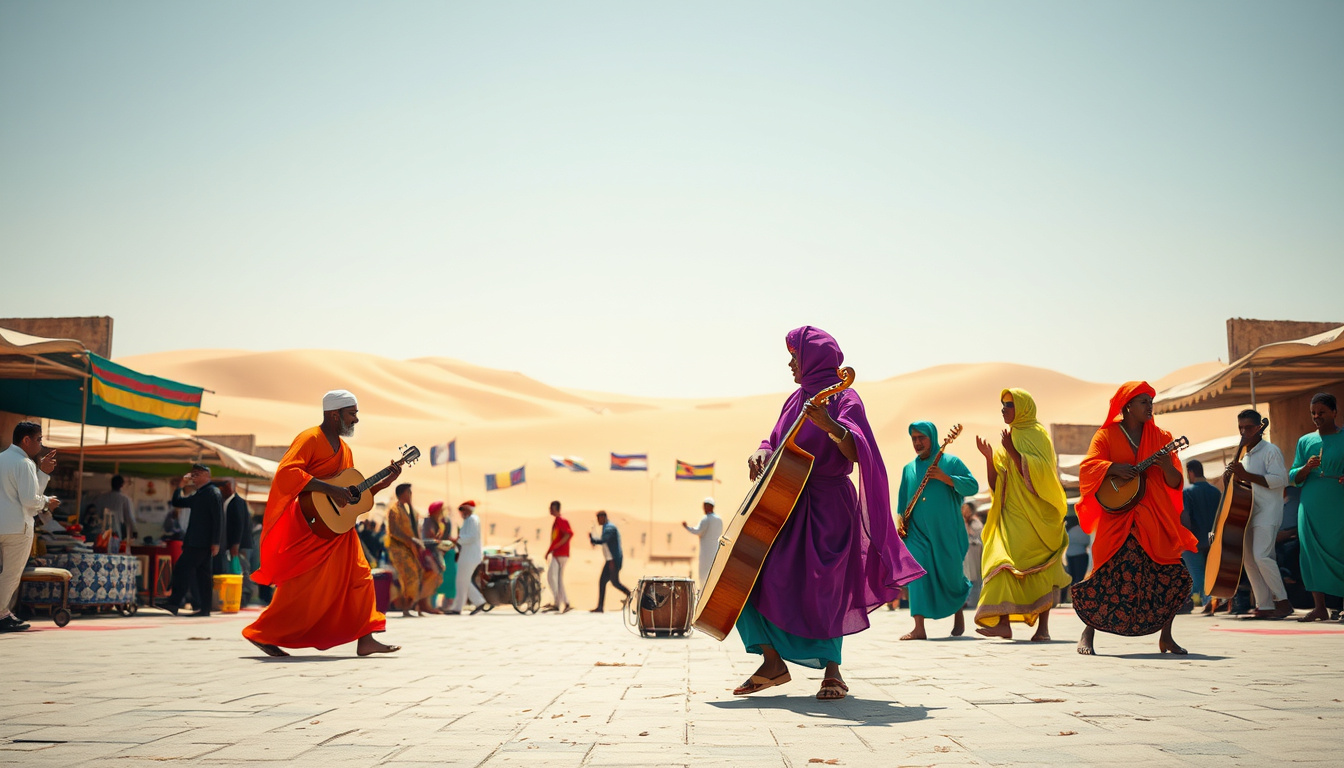In the ever-evolving landscape of global music, North Africa is emerging as a hotspot for innovative sounds that resonate with the youthful exuberance of its population.
A significant portion of this demographic, particularly those under 34, is turning away from mainstream norms to embrace a new wave of authenticity in music, known as ‘way-way.’ This article explores the vibrant chaos of this trend, epitomized by the eclectic work of Adam Abdelkader Lenox, better known as ZOUJ.
As a French-Moroccan-American sound producer, ZOUJ is at the forefront of this movement, championing a blend of tradition and avant-garde experimentation that invites listeners to celebrate the unconventional.

Key Takeaways
- North Africa’s ‘way-way’ music represents a cultural rebellion against mediocrity, embracing authenticity and chaos.
- ZOUJ’s mixtape exemplifies innovative collaboration and a fresh take on traditional Raï music through experimental sounds.
- The youth-driven movement prioritizes uniqueness over mass appeal, reflecting a desire for genuine artistic expression.
The Emergence of ‘Way-Way’ Music in North Africa
### The Emergence of ‘Way-Way’ Music in North Africa
In recent years, a vibrant and eclectic musical wave has been steadily rising from North Africa, introducing a genre known as ‘way-way.’ This innovative movement encapsulates a celebration of uniqueness and authenticity, providing a refreshing counterbalance to the increasingly homogenized global music landscape.
With a substantial portion of the North African population under the age of 34, young artists are passionately embracing unconventional sounds, diverging from the norm and often reacting against mediocrity and formalities prevalent in mainstream music.
One prominent figure leading this movement is Adam Abdelkader Lenox, better known as ZOUJ, a French-Moroccan-American experimental sound producer.
ZOUJ’s latest mixtape, ‘Sabahu Al Kheir Men Zouj,’ serves as a poignant testament to the ‘way-way’ genre, showcasing unexpected collaborations and pushing the beloved traditional Raï music into daring new territories.
This underground style is marked by emotional depth and spontaneity, with influences drawn from underground rave culture that resonate strongly with today’s youth.
ZOUJ’s artistic journey is a compelling narrative of chaos and unpredictability, emblematic of the creative process that defines the ‘way-way’ sound.
Key to this exploration is his quest for the Yamaha A1000 synthesizer, a vital instrument in crafting the unique sonic palette characteristic of this new genre.
The mixtape channels the ethos of youth culture, melding nostalgia for early digital music technology with contemporary electronic styles in a way that feels both retro and fresh.
The experimental nature of ‘Sabahu Al Kheir Men Zouj’ intentionally sidesteps mainstream radio hits, opting instead for complex, layered artistic expressions that prioritize innovation over mass appeal.
The mixtape features collaborations with a diverse array of artists from the region, underscoring a collective desire to redefine the essence of musical allure.
In an era dominated by conformity, the ‘way-way’ movement is a bold reminder of the power of authenticity and inventive spirit among the new generation of North African musicians.
ZOUJ: Redefining Sound through Experimentalism
At its core, the ‘way-way’ genre represented by ZOUJ encapsulates a remarkable fusion of influences, from traditional sounds to elements borrowed from contemporary electronic music.
This genre aims not just to entertain but to provoke thought and emotional response through the exploration of distinct soundscapes.
ZOUJ’s work stands out as a microcosm of a broader cultural shift occurring across North Africa, where artists are increasingly empowered to experiment freely.
By eschewing conventional structures and embracing an avant-garde mindset, they forge new artistic pathways that resonate with a generation craving authenticity in a world saturated with sameness.
Furthermore, by engaging in eclectic collaborations, ZOUJ also fosters a sense of community among fellow musicians, amplifying diverse voices and narratives that might otherwise remain unheard.
This collaborative spirit is critical in an age where connection and shared experiences through music can transcend geographic and cultural barriers, allowing for a richer tapestry of sound and expression.

